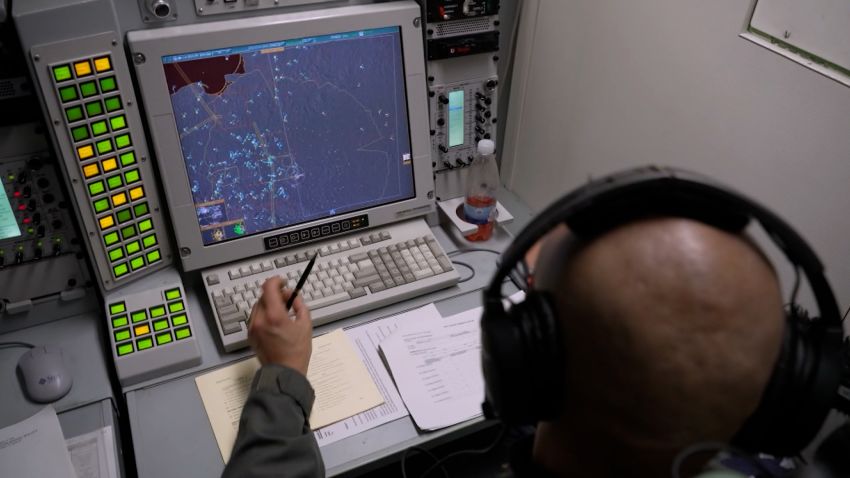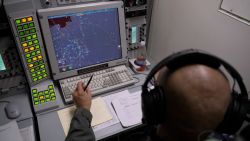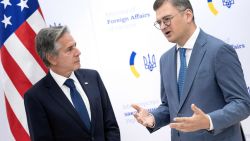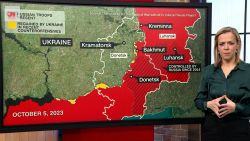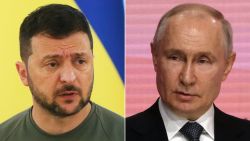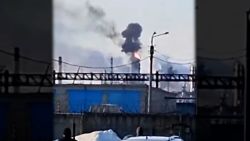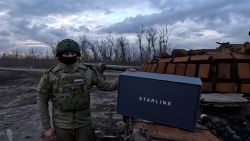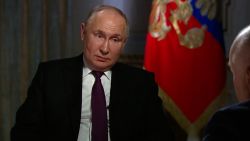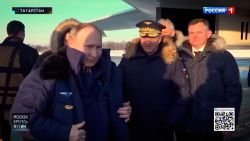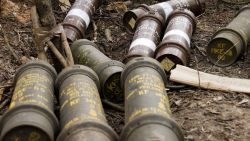Russia has been using Belarus as a springboard for many of its air operations in Ukraine, according to intelligence collected by NATO surveillance planes flying over the Polish-Ukrainian border and radar seen by CNN.
CNN accompanied NATO’s Flying Squadron 2 on one such surveillance mission on Thursday. Within two hours of taking off at 8 a.m. CET, the radar on board the NATO AWACS plane – short for Airborne Warning and Control System – picked up about a dozen Russian-made planes idling in Belarus just north of the Chernobyl nuclear power plant, NATO tactical director Denis Guillaume told CNN.
Hours later, at least nine Russian-made planes were spotted entering Ukrainian airspace from Belarus, appearing to head toward Kyiv, the radar showed.
The “vast majority” of the Russian-made fighter jets that NATO forces have seen entering Ukrainian airspace since Russia’s invasion began have originated in Belarus, the NATO mission’s technical director told CNN on board Thursday’s flight. On one particularly “active” day last week, NATO forces saw about 20 Russian jets heading to Kyiv from Belarus, he said. The military aircraft taking off from Belarus and entering Ukrainian airspace have been in support of Russian military operations in Ukraine, the NATO airmen told CNN.
Among the major questions looming over the war has been whether Belarusian forces have directly entered the conflict to support Russia. But the NATO troops said they could not answer that – Belarus and Russia use the same Soviet-era MiG-29s, they said, so it is difficult to say in real time who is actually operating them. Ukrainian pilots also use the MiG-29s, they noted, so it is similarly unclear how contested Ukraine’s airspace has become.
Still, some signs are obvious, they say. For example, the jets flying into Ukraine from Russian-allied Belarus are clearly not Ukrainian.
The AWACS plane on which CNN flew Thursday is one of the few military assets owned by NATO itself, rather than donated by a member country, and the fleet of 14 AWACS planes together conduct nearly two dozen missions per week, spying more than 400 kilometers east to ensure that no unfriendly aircraft are headed toward NATO’s airspace.
The missions are routine but have become particularly “intense” since Russia invaded Ukraine, one of the co-pilots told CNN. NATO has stepped up its defense of the eastern flank members over the last several weeks, and Thursday’s surveillance flight was particularly long, requiring a midair refueling.
As the AWACS flew its mission on Thursday, a Russian spy plane circled over Belarus doing similar surveillance in the opposite direction, the airmen pointed out. That has become typical, as has spotting Russian fighter jets – mostly MiG-29s – performing defensive exercises nearby.
The Russians have also taken to trying to jam the NATO plane’s radar, an annoying but inevitable occurrence given how visible the giant spy plane is.
“It’s not a secret we are here, and we don’t want it to be a secret,” said the NATO technical director.
One question the airmen decidedly refused to answer was whether the intelligence they gather, which is ostensibly for use only by members of the NATO alliance, is being provided to Kyiv.
“I cannot answer that question,” Guillaume said firmly.
“The only thing I can tell you right now is that we, as NATO allies, are sharing the data with NATO countries,” the NATO technical director echoed.
What the NATO member countries do with that intelligence, however, is at their discretion, the NATO technical director hinted.
The caution reflects NATO’s fraught position as the war drags on: As an organization, it continues to underline that it is not an active player in the conflict and that it is providing no direct assistance to Ukraine so as not to risk provoking further Russian aggression that some fear could even include an attack on NATO territory.
But its member states, including the US and UK, have openly touted their intelligence and military contributions to Ukraine, which have been clearly aimed at blunting the Russian military’s advances.
The NATO surveillance plane is capable of more than just intelligence-gathering, though, and can call in tactical operations if needed. For Thursday’s mission, for example, the plane was controlling fighter aircraft on the Polish-Belarusian border “in case there is a threat to NATO territory,” Guillaume said.
Any action, though, “would have to be in line with the rules of engagement,” he added. “We are still in a peacetime posture.”

